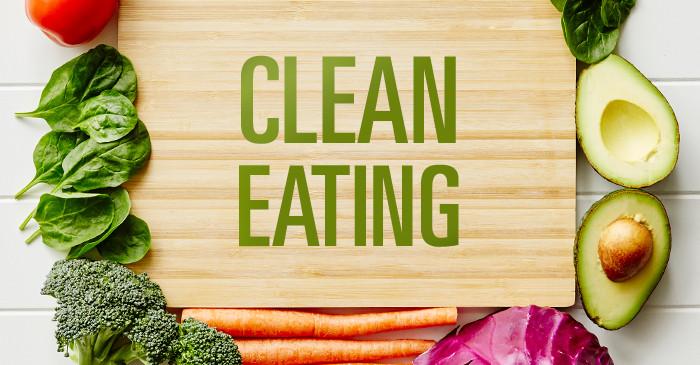
You don’t have to suffer from an autoimmune or other health condition to start eating “more clean”. In fact, I am coming across more and more people who are totally healthy yet are wanting to change their diet to eat cleaner. For these people, adopting a strict, anti-inflammatory diet like ‘The Plant Paradox’ is not only overwhelming but arguably, unnecessary. Furthermore, without the motivation to do so (i.e. you’re health is not in jeopardy), you’d probably only be setting yourself up for failure.
This is a post for those of you that don’t have any major health concerns but are becoming more and more conscious of what food you are putting in your body. Rather than drastically overhauling your diet, here are some simple steps you can take that are actually huge strides towards adopting a “cleaner palate”.
But first! What does it mean to “eat clean”? Clean eating is a very simple concept and involves eating wholesome foods that haven’t been processed. That means eating whole foods like fruit and vegetables instead of foods that have been made in a factory like crackers and biscuits. A simple way to test if a food is ‘clean’ is to ask yourself if it occurs in nature. If it does, it’s clean! Eat plenty of it. If the food is more of an ‘edible food-like substance’ and does not occur naturally, you should avoid it.
What are some of the (proposed) benefits of clean eating? (1)
- Reduced risk of developing Type II diabetes
- Reduced risk of heart disease and other vital organ diseases
- Clearer skin
- Healthier hair
- Better breath
- Longer life expectancy
- Improved mobility
- More balanced hormones
- Less mood swings
- Stronger immune system
What foods should you avoid? (1)
As a general rule, if a food falls into one (or more) of the following categories, you should try to avoid it.
- If the food comes in a packet
- If the expiration date is longer than 2 weeks
- If you can’t pronounce the ingredients
- If you wouldn’t be able to recreate it in your own kitchen (or garden)
- If it does not occur in nature
- If you wouldn’t feed it to a small child
Simple Steps Towards a Cleaner Palate
1) OILS
If any of these oils are currently in your kitchen, THROW. THEM. OUT. NOW. Seriously. There is honestly no reason to be using any of these oils in today’s day and age – they are loaded with crap:
- canola oil (click here to read an interesting perspective on the perils of canola oil)
- vegetable oil
- sunflower oil
- peanut oil
- safflower oil
- any soy based oil
- any corn based oil
Replace the above with any or all of these:
- extra virgin olive oil (click here to find out how to source a good olive oil)
- coconut oil
- avocado oil
- sesame oil
- macadamia oil
- walnut oil
- MCT oil
- ghee (not an oil per se but can often be used in place of an oil, when sautéing for example)
I have YET to find a recipe that calls for canola or vegetable oil, for example, that can’t be swapped out for EV olive oil, coconut or avocado oil.
Also! Be sure to read your labels when sourcing sauces, marinades and salad dressings. Many use canola, vegetable or sunflower oil as their base. Try to source only those that use EV olive oil or avocado oil. One of my absolute favourite brands for “clean” salad dressings and other sauces is Primal Kitchen where I have yet to find dressing or marinade I don’t like or that isn’t compliant.
SNEAKY RANDOM TIP: Ever had a grilled cheese with coconut oil instead of butter or mayo on your bread? Try it. You and your kids will be shocked at how yummy it is.
2) SUGARS
Get rid of these sugars:
- white refined sugar
- brown sugar (even “in the raw”)
- powdered sugar
- cane sugar
- agave
And replace your sugar shelf with any of these:
- Stevia
- Swerve (click here to learn more)
- organic coconut sugar
- dates
- raw organic honey
- organic, real, maple syrup (no Aunt Jemima processed stuff)
- monk fruit
- erythritol
- xylitol
At the end of the day, sugar is sugar. But at least you can find better or more natural sources of sugar that work the same (cooking-wise), if not better, than refined sugars. And I’m sure many of you are thinking, “But how can I bake anything without white refined sugar”? I honestly don’t know the last time I baked or cooked with white or brown sugar yet we have an endless supply of delicious muffins, cookies and brownies in our house. I even made a grain-free, refined sugar free, cherry crisp the other day that was soooo yummy!
It’s just a matter of sourcing new and better recipes that are refined sugar free. Or learning how to substitute more natural unrefined sources when a recipe calls for white refined sugar.
Three of my favourite sources for finding sweets or baked goods that are delicious yet healthy are www.paleorunningmomma.com, www.everylastbite.com and www.dadaeats.com. I personally think @dadaeats is especially good for yummy baked goods 🙂
When it comes to dinners and traditional sauces that call for brown sugar or white sugar, try coconut palm sugar instead (1:1) or even dates! For example, here is a DELICIOUS home-made bbq sauce that we devoured with our rack of ribs the other night that is sweetened with dates.
What about artificial sweeteners? Simple answer. CEASE AND DESIST. If it’s a matter of wanting to keep your calorie intake down then replace any of your artificial sweeteners with Stevia. I did some research on artificial sweeteners a little while back (click here) and I strongly suggest to do your own research if you tend to use artificial sweeteners a lot (e.g. Splenda, Twin, Sweet N’ Low, Aspartame, etc). In my opinion, it’s just not worth the risk, or the crap.
3) SOY
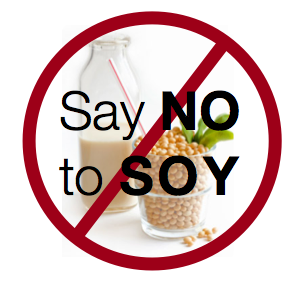
I may be a culprit of ‘information bias’ but there just seems to be no good reason to ingest soy (in my opinion)…unfermented soy, that is, commonly found on North American grocery shelves. Fermented soy, common to Asian cultures/cuisine, is a much better alternative. I’ll leave it to you to read about the difference between fermented and unfermented soy here, but the bottom line is that the probiotics found in fermented soy can help feed your gut bugs and digestive flora, and also help you absorb the nutrients you need like, calcium, magnesium, iron and zinc.
So instead of tofu, choose tempeh. Other good sources of fermented soy include miso and natto.
And instead of a soy latte, enjoy a coconut milk or almond milk latte.
Furthermore, DITCH YOUR SOY SAUCE ALREADY and replace with coconut aminos (1:1 in any recipe). A lot of people have opted for Tamari lately, which is a gluten-free soy sauce – it is arguably still better than regular soy sauce but still not as good as coconut aminos which is made from fermented coconut sap and salt (that’s it, that’s all). Tamari, on the other-hand, is made from soybeans. Adjusting to the taste of coconut aminos may take some time (especially when eating sushi), but I promise you that your taste buds will adapt. Plus there are multiple brands of coconut aminos out there with varying flavours. For example, I have found the Naked Coconuts brand to be quite a bit sweeter and lighter in color than the Coconut Secret brand, which I find to be more comparable to lite soy sauce.
4) BUTTER
This is an easy one. Instead of regular butter or margarine (do people still buy margarine?), opt for grass-fed butter or better yet, ghee. What’s ghee? Read more about it here. You can also substitute coconut oil for butter in many recipes (coconut oil has the consistency of soft butter when it’s room temperature or slightly cooler).
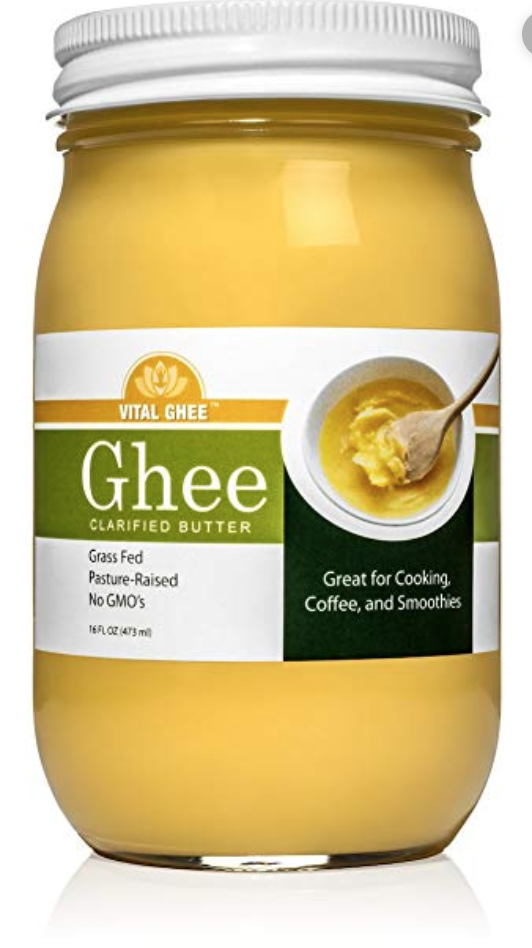
5) BREAD
If you’re one of the lucky ones who doesn’t have a health concern and who doesn’t have a gluten intolerance, then you probably still get to enjoy the fabulous taste of bread (what I would give to eat a real sandwich again…sigh). That said, you can still make healthier choices when it comes to what kind of bread to eat.
Two of the best choices out there seem to be 1) sprouted grain and 2) traditional sourdough. (I mention “traditional” because the quality and content of the bread is dependent on how it’s made.) The list of benefits for each are extensive including being lower in gluten, higher in antioxidants, having less of an impact on blood sugar, lower sugar content overall, lower phytate levels, etc. Please click on the links provided just previously (click on each highlighted word) to read about the benefits of each.
What about gluten free bread? This is a tricky one to answer. Coming from someone who is gluten-intolerant, sometimes you’re just so desperate for a piece of bread that you reach for a gluten-free loaf. But the problem with gluten-free bread, and more so just anything that reads “gluten-free” (baked goods, processed foods, etc.) is that often (not always, but often) the process of removing gluten just means they’ve filled the void with other crap that you don’t really want either (like corn, for example). When it comes to eating “gluten free”, you want to read your labels so that you know what you’re eating. And if you’re feeling ballsy, instead of going gluten-free, why not try going GRAIN-free? Click here for a few “bread” options that are grain-free. I would also suggest perusing www.simplemills.com for a variety of cookies, crackers, cakes and breads that are all super healthy and not just gluten-free but GRAIN-free. www.cappellos.com is another great source for finding grain-free pastas, pizza crusts and more.
6) CORN
Yet another tricky one. And a highly debated one. I’ll leave this to you to decide.
But to quote one of my favourite guys, Dr. Josh Axe, this is what he has to say about corn:
“Although UNprocessed, organic, non-GMO corn itself isn’t necessarily bad for you — considering it’s been eaten for thousands of years and actually has some health benefits — the kind widely consumed today is another story. The types of corn so commonly included in both children’s and adults’ diets today are the overly modified kinds — found in fried corn tortilla chips, buttery popcorn, high fructose corn syrup, corn oil, corn flour and other packaged food products… In the U.S. and most other western, developed nations, eating fresh, organic corn on the cob is not the problem that most people face. Rather, over consuming highly processed foods that have multiple chemically engineered ingredients derived from this crop is. The problem is that nearly all of the corn available in standard American supermarkets today is genetically modified — plus it’s usually also unrecognizable considering how much processing it’s gone through.”
LIke I said, it’s a tough one. It’s hard to imagine NOT eating chips and guacamole…but maybe go easy. OR, you could try ordering some grain-free tortilla chips from the Siete brand.
7) GRANOLA BARS (AND OTHER SNACKS ON THE GO)
In my opinion, and for the quickest, easiest solution, if you’re looking for healthy bars and snacks on the go, just look for anything “Paleo” on the label (assuming you have no nut allergies and again, no auto-immune concerns – I mention the latter as although I incorporate a lot of Paleo recipes, their snacks often use cashews as the base and cashews are extremely lectin-rich = not ideal for autoimmune sufferers).
In the simplest of terms, Paleo followers avoid processed foods, sugar, soft drinks, grains, most dairy products, legumes, artificial sweeteners, vegetable oils, margarine and trans fats. They focus on foods that are found in their most natural form often resembling what human hunter-gatherer ancestors ate thousands of years ago including meat, fish, eggs, vegetables, fruits, nuts, seeds, herbs, spices, healthy fats and oils.
There are so many unprocessed, whole food options (i.e. Paleo-like) available now that there should never be a need to reach for a “Quaker Chewy Bar” ever again. In fact, here is a picture of some Paleo bars I found at Costco just the other day!
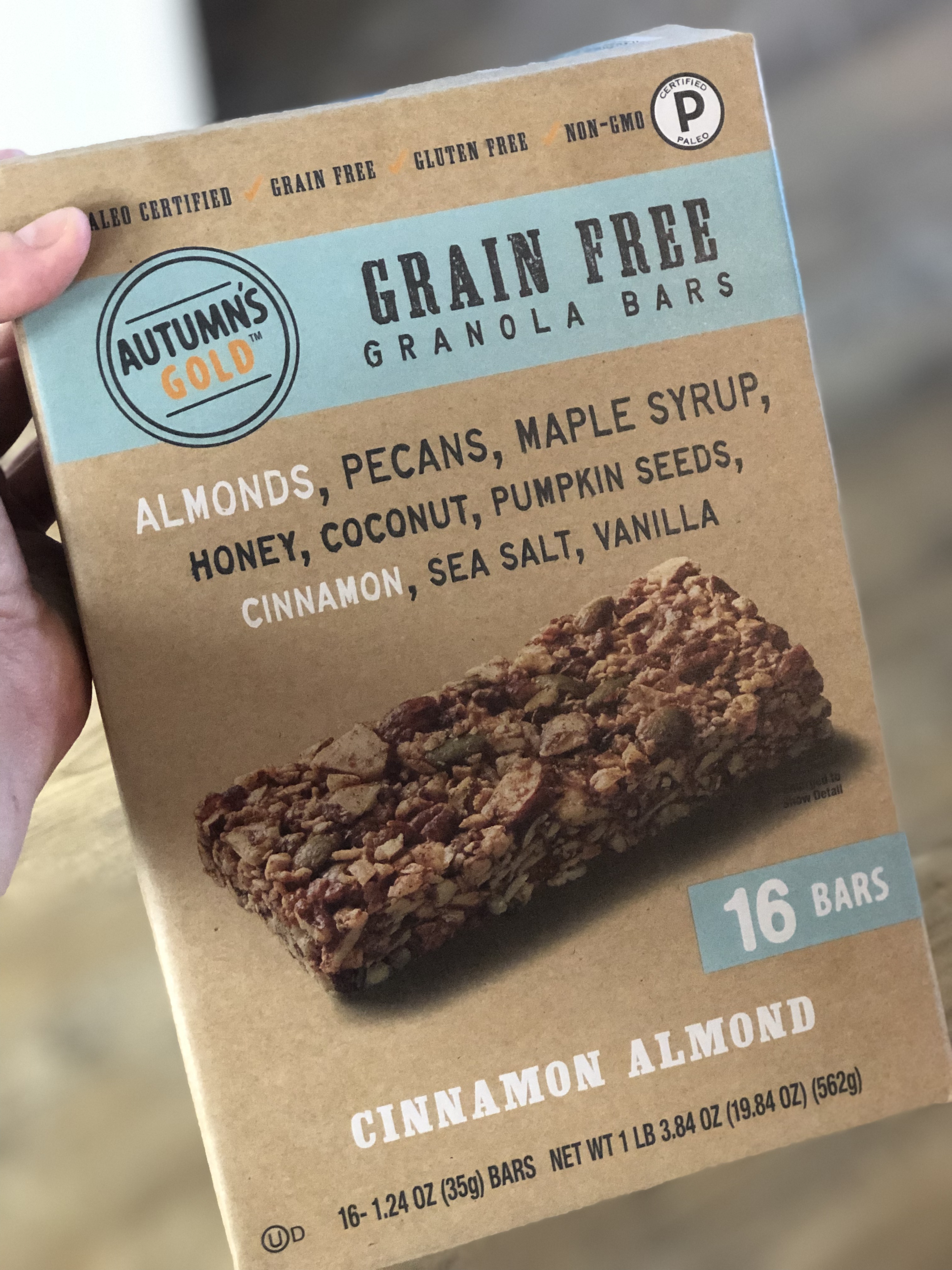
It’s a matter of reading ingredients.
Here is a good example: look at the number of type of ingredients of this Nature Valley Sweet and Salty bar versus the list of ingredients in a Lara Bar:
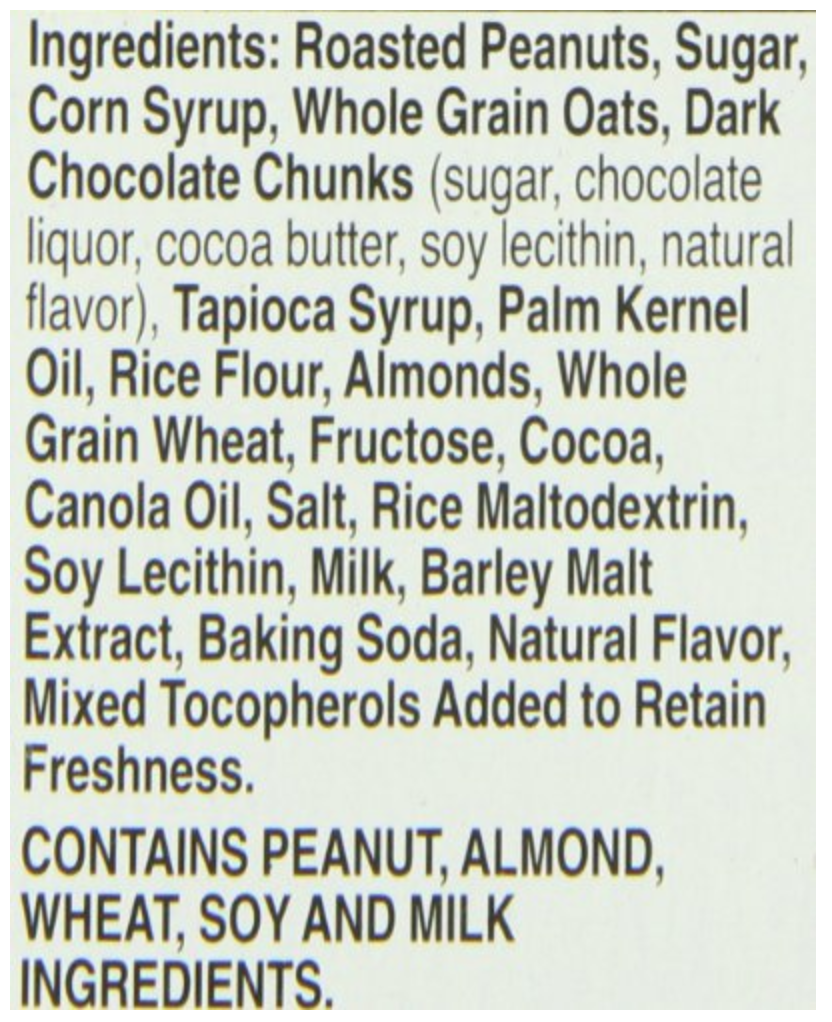
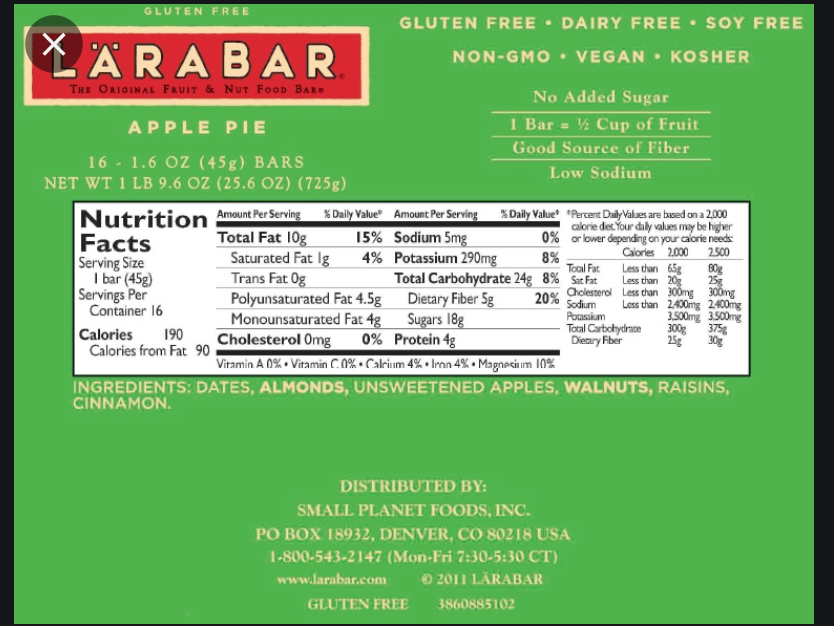
These energy balls are also a great option if you want something home-made that will “fill the void” when you’re on the go.
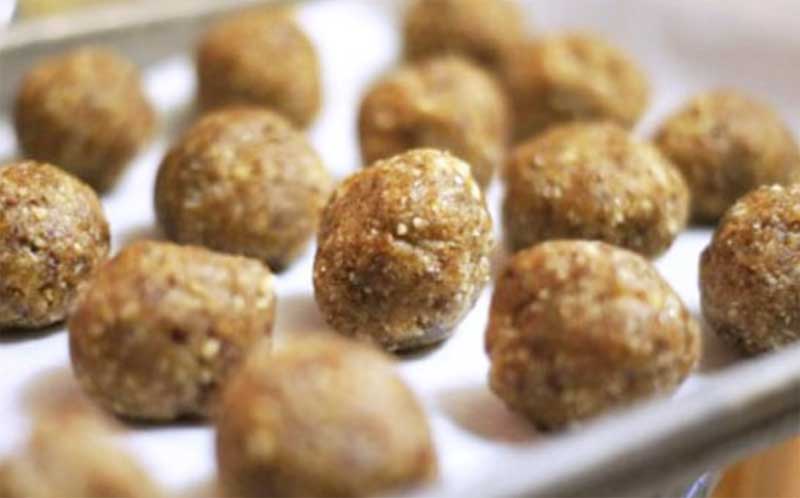
Again, lots of options out there! No reason to eat processed snacks anymore!
8) MEAT, FISH AND CHICKEN (and eggs)
This can be a controversial subject as there are environmental and animal rights issues to consider, or that come into play, when talking about animal and fish protein.
From a health / ingestion perspective ONLY (well, and a humane perspective too), it is better to consume:
- grass-fed, organic beef
- wild-caught fish and shell-fish (instead of farmed fish) – click here to understand the difference
- true pasture-raised chickens and eggs, free from antibiotics and hormones
- NB: finding true pasture-raised chicken and eggs can be tricky; it’s a matter of understanding the various labels; for example, “cage free”, in most instances, just means the chickens were not raised in cages however they were likely raised in severely over-crowded, unsanitary and inhumane conditions where the chickens were fed a horrible diet and were pumped full of antibiotics; similarly, “free-range” can often mean the chickens were allowed to roam in a pen that was all of 1 sq metre, or even worse, were just given a hole from which they could poke their head out of to feel fresh air on their beaks. Click here to better understand the difference between pasture-raised and free-range
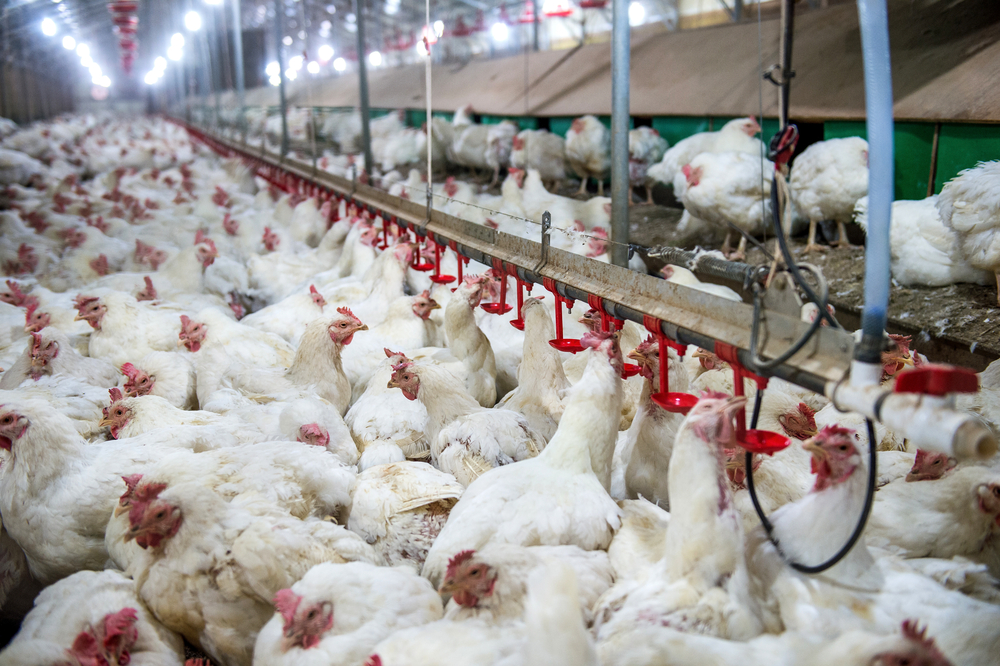
The simple concept being that if you are wanting to eat cleaner and be more conscious of what you are putting into your body, then eating beef, for example, from cows that were fed a grain-based diet full of soy, corn, and who knows what else on TOP of the added antibiotics and hormones means YOU are essentially ingesting these same products and chemicals.
If you want to eat clean, then you need to eat animals that ate “clean” too.
(Side note: My only hesitation with “promoting” grass-fed meat is that from an environmental perspective, grass-fed cattle have a larger negative impact to the environment than grain-fed cattle (read why here) AND it is not a long term sustainable solution if current rates of beef consumption stay the same or continue to rise. Currently, the only solution is to reduce our consumption of beef overall I guess 🙁 Anyways – just needed to say that – not here to talk about climate change or animal rights issues – but still good info to be aware of.)
9) CHOCOLATE
Saved the best for last.

Instead of reaching for another Kit Kat, Aero or Dairy Milk (loaded with sugar and will leave you feeling like shit), why not reach for an organic, dark chocolate, square? But be sure to choose the high quality stuff — dark chocolate with 70% or higher cocoa content. Why? Because, consumed in moderation, dark chocolate is actually loaded with nutrients – not to mention being one of the best antioxidants on the planet – and may have multiple health benefits. Read more here.
10) DAIRY
Yet another controversial topic. I have actually already posted about my thoughts or views on dairy so I won’t get into detail here. Feel free to read more here instead. Cheers!
Hope this helps! Or if anything just provides some food for thought. I’m sure there are many other steps you can take that I haven’t mentioned here; feel free to comment or message me with any additional info or questions and we can add to the post at anytime!
References:
(1) https://www.sundried.com/blogs/training/65446981-clean-eating-what-is-it-and-how-can-you-benefit-from-it
